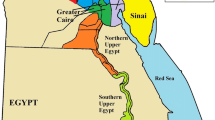Summary
Two mathematical models (A and B) were used to study joint effects of selection and assortative mating on genetic change. Computer simulation was used to verify and extend the results. In each model, the genotype was additive with equal effects at each of N loci and the environmental distribution was N(0, σ2). In Model A, each locus had two alleles; in Model B, allelic effects at each locus followed a normal distribution. Using Model A, genetic change with assortative or random mating of selected parents was evaluated for combinations of number of loci (N = 1, 2, 3), heritability in base population (H[0] = 0.2, 0.5, 0.8), allelic frequency in base population (p = 0.1, 0.5), and proportion selected (α = 0.20, 0.85). Using Model B, genetic change with or without assortative mating was calculated for combinations of N (1, 2, 3, 5, 10, 100, H[0] (0.2, 0.5, 0.8) and α (0.20, 0.85). Response to selection under both mating systems in a finite population was estimated using Model A from 200 replications of a computer simulation; this was done for all combinations of N (1,2, 3, 5, 10) and α(0.20, 0.85), with H[0] = 0.5 and p = 0.1. Results obtained with both models indicate that the effect of assortative mating on genetic change increases with H[0] and α, and decreases with p. With Model A, the relationship between N and the effect of assortative mating on genetic change was not clear; with Model B, however, the advantage of assortative over random mating increased with N, as expected. Simulation results were in agreement with theory of Model A. This study indicates that selection with assortative mating can have a sizable (10 to 20%) long-term advantage over selection with random mating of parents when H[0] is high, p is low and α is large.
Similar content being viewed by others
References
Baker RJ (1973) Assortative mating and artificial selection. Heredity 31:231–238
Breese EL (1956) The genetical consequences of assortative mating. Heredity 10:323–343
Bulmer MG (1980) The mathematical theory of quantitative genetics. Clarendon Presss, Oxford
Crow JF, Felsenstein J (1968) The effect of assortative mating on the genetic composition of a population. Eugen Q 15:85–97
Crow JF, Kimura M (1970) An introduction to population genetics theory. Harper and Row, New York
De Lange AO (1974) A simulation study of the effects of assortative mating on the response to selection. Proc 1st World Cong Genet Appl Livestock Prod 3:421–435
Falconer DS (1981) Introduction to quantitative genetics. Longman, New York
Fernando RL, Baker RL, Gianola D (1983) Assortative mating and selection: some computer simulation results. Summaries of 34th Annual Meeting (abstr). Eur Assoc Anima Prod 1:116
Fisher RA (1918) The correlation between relatives on the supposition of Mendelian inheritance. Trans R Soc Edinburgh 52:399–433
Forsythe GE, Malcolm MA, Moler CB (1977) Computer methods for mathematical computations. Prentice-Hall, Inc, New Jersey
Lande R (1977) The influence of the mating system on the maintenance of genetic variability in polygenic characters. Genetics 86:485–498
McBride G, Robertson A (1963) Selection using assortative mating in Drosophila melanogaster. Genet Res 4:356–369
Mwenya WNM, Gianola D, Baker RL, Grossman M (1983) Response to selection for pupa weight with and without assortative mating in Tribolium castaneum (abstr). J Dairy Sci 66:114
Mwenya WNM, Gianola D (1984) Estimates of genetic parameters in randomly or assortatively mated Tribolium castaneum (abstr). J Anim Sci 59 (Suppl 1):82
Pearson K (1903) Mathematical contributions to the theory of evolution. 11. On the influence of natural selection on the variability and correlations of organs. Philos Trans R Soc London, Ser A 200:1–66
Rico MF, Nuez F, Baselga M (1973) Mating system and response to selection. In: Proc 13th Int Cong Genet (abstr). Genetics 74s:299
Wilson SP, Kyle WH, Bell AE (1965) The effects of mating systems and selection on pupa weight in Tribolium. Genet Res 6:341–351
Wright S (1921) Systems of mating. Genetics 6:111–178
Author information
Authors and Affiliations
Additional information
Communicated by D. Van Vleck
Rights and permissions
About this article
Cite this article
Fernando, R.L., Gianola, D. Effect of assortative mating on genetic change due to selection. Theoret. Appl. Genetics 72, 395–404 (1986). https://doi.org/10.1007/BF00288579
Received:
Accepted:
Issue Date:
DOI: https://doi.org/10.1007/BF00288579




